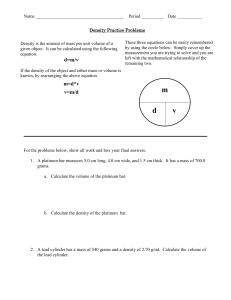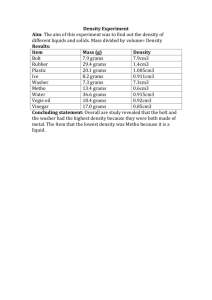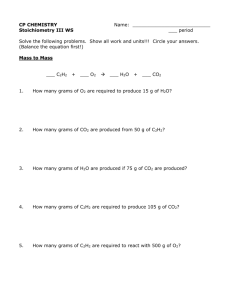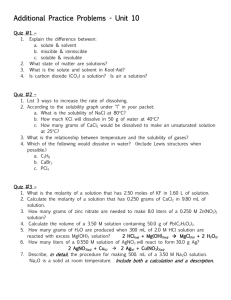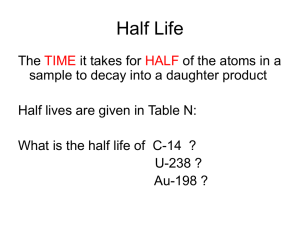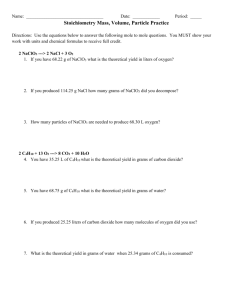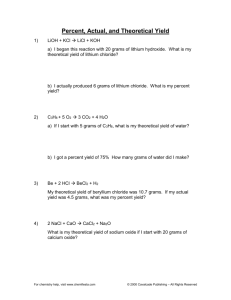Stoichiometry & Limiting Reagent Worksheet
advertisement
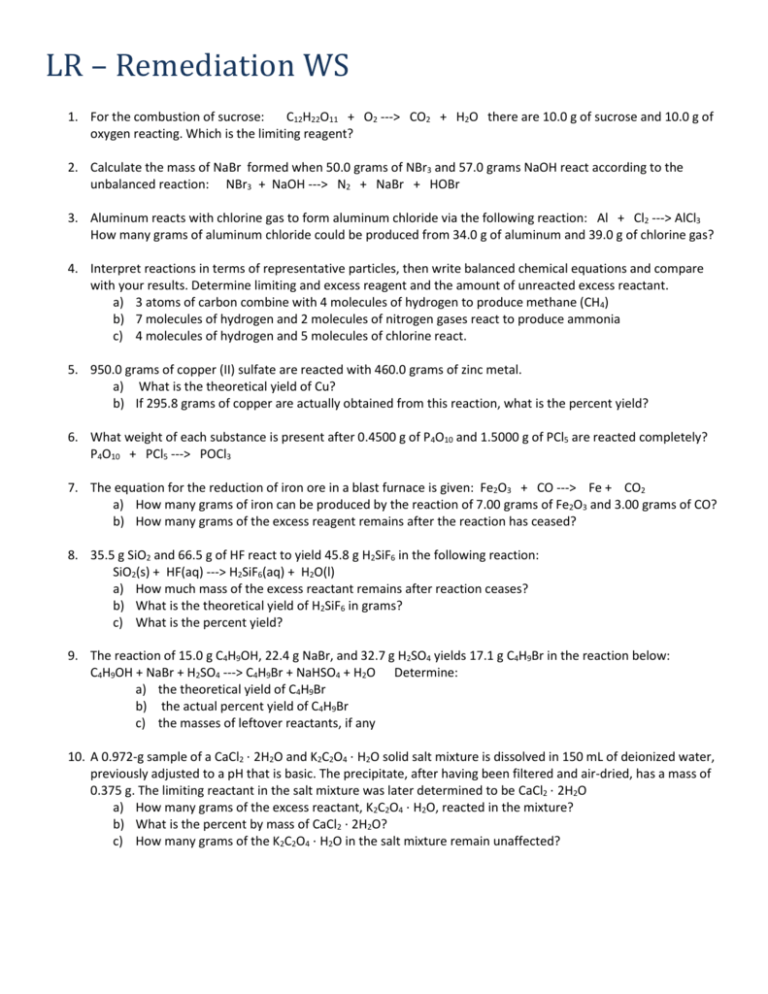
LR – Remediation WS 1. For the combustion of sucrose: C12H22O11 + O2 ---> CO2 + H2O there are 10.0 g of sucrose and 10.0 g of oxygen reacting. Which is the limiting reagent? 2. Calculate the mass of NaBr formed when 50.0 grams of NBr3 and 57.0 grams NaOH react according to the unbalanced reaction: NBr3 + NaOH ---> N2 + NaBr + HOBr 3. Aluminum reacts with chlorine gas to form aluminum chloride via the following reaction: Al + Cl2 ---> AlCl3 How many grams of aluminum chloride could be produced from 34.0 g of aluminum and 39.0 g of chlorine gas? 4. Interpret reactions in terms of representative particles, then write balanced chemical equations and compare with your results. Determine limiting and excess reagent and the amount of unreacted excess reactant. a) 3 atoms of carbon combine with 4 molecules of hydrogen to produce methane (CH4) b) 7 molecules of hydrogen and 2 molecules of nitrogen gases react to produce ammonia c) 4 molecules of hydrogen and 5 molecules of chlorine react. 5. 950.0 grams of copper (II) sulfate are reacted with 460.0 grams of zinc metal. a) What is the theoretical yield of Cu? b) If 295.8 grams of copper are actually obtained from this reaction, what is the percent yield? 6. What weight of each substance is present after 0.4500 g of P4O10 and 1.5000 g of PCl5 are reacted completely? P4O10 + PCl5 ---> POCl3 7. The equation for the reduction of iron ore in a blast furnace is given: Fe2O3 + CO ---> Fe + CO2 a) How many grams of iron can be produced by the reaction of 7.00 grams of Fe2O3 and 3.00 grams of CO? b) How many grams of the excess reagent remains after the reaction has ceased? 8. 35.5 g SiO2 and 66.5 g of HF react to yield 45.8 g H2SiF6 in the following reaction: SiO2(s) + HF(aq) ---> H2SiF6(aq) + H2O(l) a) How much mass of the excess reactant remains after reaction ceases? b) What is the theoretical yield of H2SiF6 in grams? c) What is the percent yield? 9. The reaction of 15.0 g C4H9OH, 22.4 g NaBr, and 32.7 g H2SO4 yields 17.1 g C4H9Br in the reaction below: C4H9OH + NaBr + H2SO4 ---> C4H9Br + NaHSO4 + H2O Determine: a) the theoretical yield of C4H9Br b) the actual percent yield of C4H9Br c) the masses of leftover reactants, if any 10. A 0.972-g sample of a CaCl2 ⋅ 2H2O and K2C2O4 ⋅ H2O solid salt mixture is dissolved in 150 mL of deionized water, previously adjusted to a pH that is basic. The precipitate, after having been filtered and air-dried, has a mass of 0.375 g. The limiting reactant in the salt mixture was later determined to be CaCl2 ⋅ 2H2O a) How many grams of the excess reactant, K2C2O4 ⋅ H2O, reacted in the mixture? b) What is the percent by mass of CaCl2 ⋅ 2H2O? c) How many grams of the K2C2O4 ⋅ H2O in the salt mixture remain unaffected?
